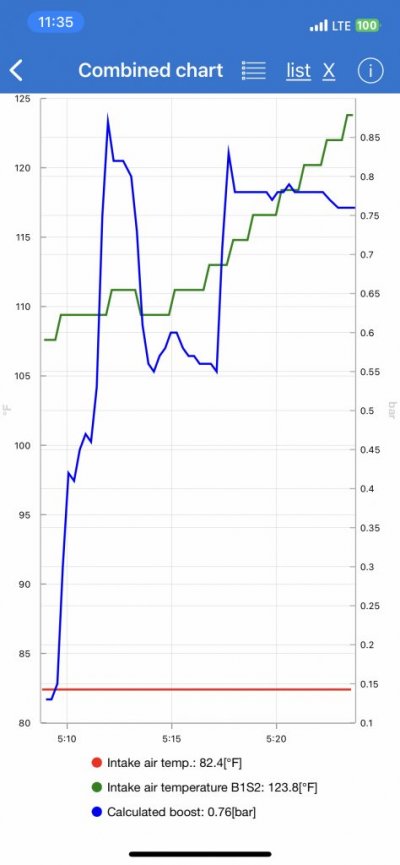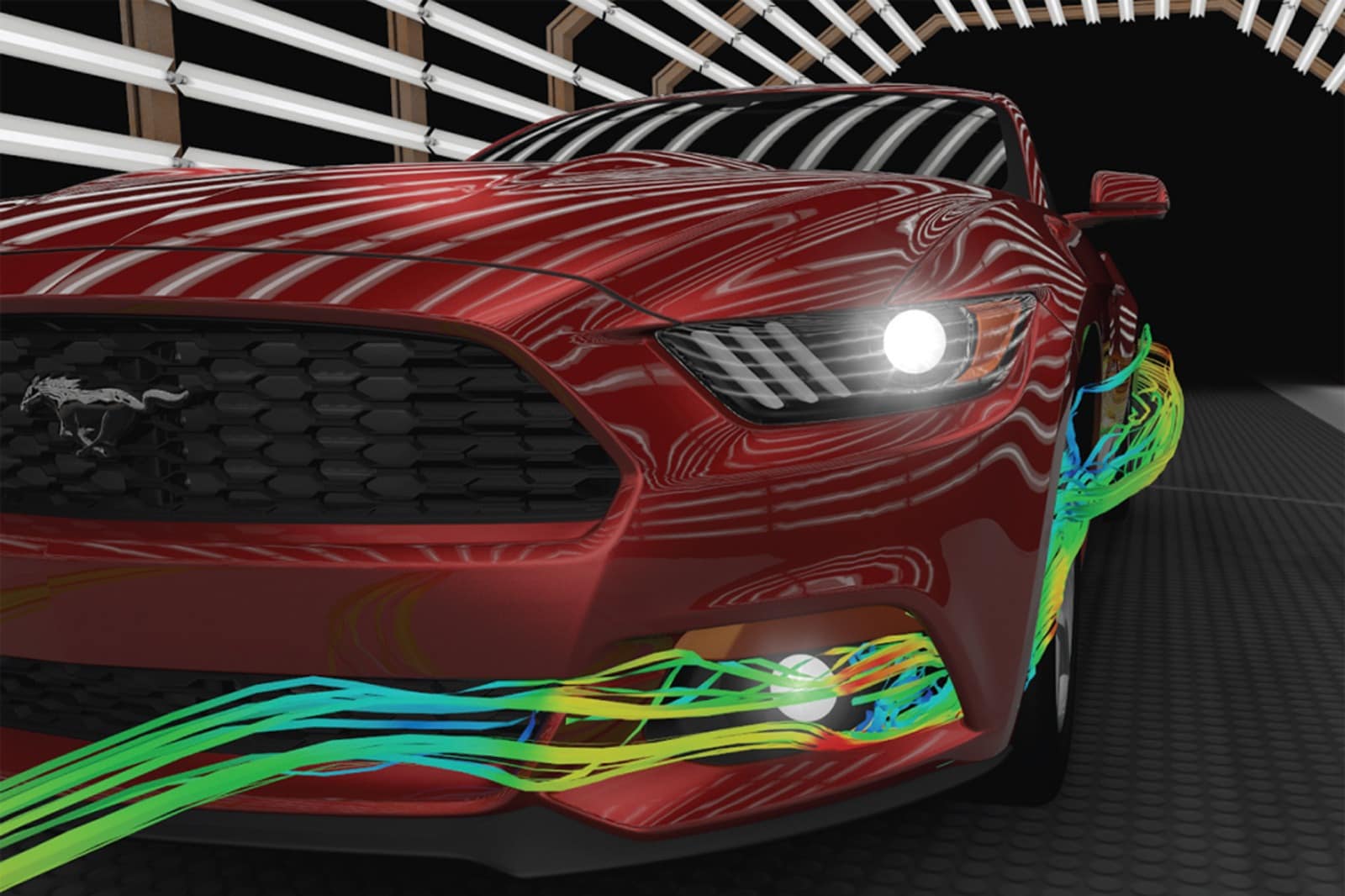42pilot
Member
I used to build early turbo Porsche motors (air cooled), including EFI conversions and designing intercoolers to match turbos for each HP application. HP/TQ numbers were 525/520 up to 675/640 on 3.3L up to 3.6L, 2500 lb cars.
With this in mind, I am trying to decide whether it really makes sense to upgrade the IC as the OEM is really not bad. The end tanks seem fine as they are molded plastic focusing on flow and the core seems fine in stock application. I don't give comments like, "it feels faster" or "better throttle response" or "engine is definitely smoother" (all actual comments on this forum) any credit as you cannot measure pressure, volume or temp through your butt. So, I bought an OBD II reader and started logging data.
Here are my parameters:
1. I own my 2020 Expedition, so longevity and reliability are paramount.
2. I tow a 6200 lb travel trailer A LOT and want to improve performance, keeping #1 above at the forefront.
3. I will NOT be buying a tune.
4. Any IC will have to be bolt-on.
5. I rarely exceed 64 mph while driving. It is the sweet spot for economy. BUT, I limit the transmission to 7th gear to eliminate constant shifting. It is also the sweet spot for torque (according to published dyno runs for stock 3.5 motors).
6. East of the Rockies, I use 87 octane fuel. Above 5,000 ft, I use 91 octane.
During my 2 hour logging today, on relatively flat, light traffic, 64 mph cruising pulling tandem axle, 6200 lb trailer, I learned the following:
1. Calculated engine load value - 27.84% (nice)
2. Engine RPM - 2546
3. Ambient Air Temp - 66.2 F
4. Air intake 1 (pre-turbos) - 78.8 F
5. Air intake 2 temp at manifold - 111.2 F (IC adding no value given ambient vs IAT 2)
6. Throttle position - 25.1%
7. Timing advance - 20 degrees (obviously no boost, so that's great - under boost, timing will be nearly 0)
8. Catalytic converter 1 temp - 1474.88 degrees (cat 2 is nearly identical)
9. Absolute load value - 66.3% (clearly no boost as that will begin at 100%)
10. Calculated boost - 0.13 bar (technically, the turbos are producing 1.9 lbs of boost)
Overall, this motor is impressive pulling a 6200lb camper. It is really not working at all at ~28%. For my application, this is the perfect platform as an everyday driver, and a vacation tow vehicle.
So, what is happening under boost? I did not log all the above parameters, but I did screen shot the live data (see attached):
1. IAT temp 1 pre-turbo is steady 82.4 degrees during the nearly 15 second pull.
2. IAT temp 2 at the manifold increases sharply under load and likely increases more over time.
3. Boost approx .76 bar (~ 11psi).
My main problem, and the primary reason I am considering an aftermarket IC is this - why in the hell does Ford have louvers blocking air to the IC that only open under load? Why not have them open all the time? Why close them at all? On air to air ICs, the holy grail was lowering the charge temp to ambient - it never happened or happens now to my knowledge. But blocking cooling air until its needed makes no sense. By the time they open, its too late.
So, I am going to lock the louvers open and see if the attached graph improves. If it does not, then I will buy an aftermarket IC AND remove the louvers.
Cooling the charge air temp will reduce the possibility of detonation (longevity and reliability), produce more torque (HP is overrated as it is simply a measurement of work over time - no need for a tune with the possible exception to lock the transmission sooner), and provide a more efficient (absolute load value) engine. Maybe, even a bit more MPG.
More later...
With this in mind, I am trying to decide whether it really makes sense to upgrade the IC as the OEM is really not bad. The end tanks seem fine as they are molded plastic focusing on flow and the core seems fine in stock application. I don't give comments like, "it feels faster" or "better throttle response" or "engine is definitely smoother" (all actual comments on this forum) any credit as you cannot measure pressure, volume or temp through your butt. So, I bought an OBD II reader and started logging data.
Here are my parameters:
1. I own my 2020 Expedition, so longevity and reliability are paramount.
2. I tow a 6200 lb travel trailer A LOT and want to improve performance, keeping #1 above at the forefront.
3. I will NOT be buying a tune.
4. Any IC will have to be bolt-on.
5. I rarely exceed 64 mph while driving. It is the sweet spot for economy. BUT, I limit the transmission to 7th gear to eliminate constant shifting. It is also the sweet spot for torque (according to published dyno runs for stock 3.5 motors).
6. East of the Rockies, I use 87 octane fuel. Above 5,000 ft, I use 91 octane.
During my 2 hour logging today, on relatively flat, light traffic, 64 mph cruising pulling tandem axle, 6200 lb trailer, I learned the following:
1. Calculated engine load value - 27.84% (nice)
2. Engine RPM - 2546
3. Ambient Air Temp - 66.2 F
4. Air intake 1 (pre-turbos) - 78.8 F
5. Air intake 2 temp at manifold - 111.2 F (IC adding no value given ambient vs IAT 2)
6. Throttle position - 25.1%
7. Timing advance - 20 degrees (obviously no boost, so that's great - under boost, timing will be nearly 0)
8. Catalytic converter 1 temp - 1474.88 degrees (cat 2 is nearly identical)
9. Absolute load value - 66.3% (clearly no boost as that will begin at 100%)
10. Calculated boost - 0.13 bar (technically, the turbos are producing 1.9 lbs of boost)
Overall, this motor is impressive pulling a 6200lb camper. It is really not working at all at ~28%. For my application, this is the perfect platform as an everyday driver, and a vacation tow vehicle.
So, what is happening under boost? I did not log all the above parameters, but I did screen shot the live data (see attached):
1. IAT temp 1 pre-turbo is steady 82.4 degrees during the nearly 15 second pull.
2. IAT temp 2 at the manifold increases sharply under load and likely increases more over time.
3. Boost approx .76 bar (~ 11psi).
My main problem, and the primary reason I am considering an aftermarket IC is this - why in the hell does Ford have louvers blocking air to the IC that only open under load? Why not have them open all the time? Why close them at all? On air to air ICs, the holy grail was lowering the charge temp to ambient - it never happened or happens now to my knowledge. But blocking cooling air until its needed makes no sense. By the time they open, its too late.
So, I am going to lock the louvers open and see if the attached graph improves. If it does not, then I will buy an aftermarket IC AND remove the louvers.
Cooling the charge air temp will reduce the possibility of detonation (longevity and reliability), produce more torque (HP is overrated as it is simply a measurement of work over time - no need for a tune with the possible exception to lock the transmission sooner), and provide a more efficient (absolute load value) engine. Maybe, even a bit more MPG.
More later...



